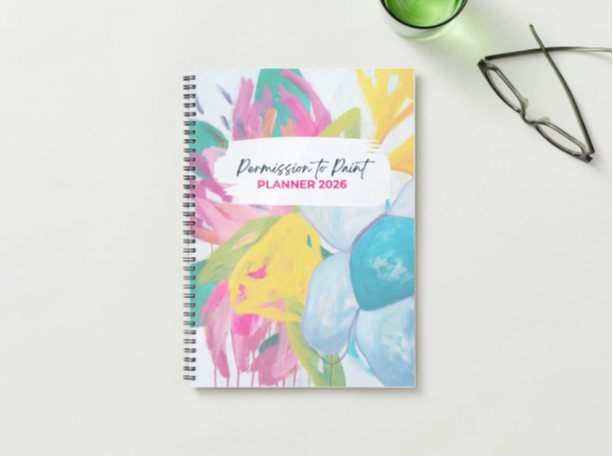Why Planning Fails for Artists and What to Do Instead
Aug 05, 2025
Planning might not feel like the most creative part of being an artist—but it’s often the missing ingredient between where you are now and where you really want to be. If you’ve ever reached the end of a year wondering where the time went and why your big goals never quite landed, you’re not alone.
In this blog, I want to reframe the way you look at planning as an artist—because it’s probably not you that’s the problem. It’s the method. So let’s unpack why traditional goal setting doesn’t work for creatives, and how to shift your mindset to something far more sustainable and empowering.
Want to dive deeper? Watch the full video episode here:
How to Map Out Your Year for Success as an Artist
Why Traditional Goal Setting Doesn’t Work for Artists
Let’s be honest: most of us weren’t taught how to set goals in a way that feels good. You might’ve tried one of the following:
- You set huge goals in January and lost motivation by March
- You copied what others were doing instead of tuning into what you actually wanted
- You wrote out a plan but didn’t break it down, so it never really went anywhere
No wonder planning feels heavy. The usual approach is rigid, external, and often filled with shoulds.
The truth? Most planning tools were built for productivity-focused thinkers, not for creatives navigating emotion, energy cycles, and often multiple roles in life and business.
The Cost of Winging It
Some artists tell me, “I like to go with the flow.” That’s totally valid—but going with the flow without direction often leads to:
- Saying yes to projects that don’t align
- Feeling like you're doing a lot but not progressing
- Constantly comparing yourself to others
- Feeling like you're floating instead of leading
A flexible plan gives you room to pivot, while still keeping you grounded in where you're going.
How I Made Peace with Planning
I used to hate goal setting. Every quarter, I’d write ambitious plans, then feel rubbish when I didn’t hit them. I have ADHD, and likely ASD, and like so many neurodivergent creatives, traditional planning made me feel like I was always behind.
That’s when I started building my own method—one rooted in clarity, alignment, and realistic action. It’s gentle, effective, and designed with artists (and creative brains) in mind.
Final Thoughts
If you’ve struggled with planning in the past, please know: there’s nothing wrong with you. You just need a planning approach that actually supports you, not shames you.



